Did you know a Chinese Water Dragon can live up to 15 years in the wild?
Under proper care in captivity, they can live happily for up to 20 years!

Providing proper care starts with finding the optimal Chinese Water Dragon enclosure.
Here, we’ll explain their environmental preferences, recommended enclosure size and accessories, and extra information to help you care for your Chinese Water Dragon.
Natural Habitat of the Chinese Water Dragon

Chinese Water Dragons reside in Cambodia, Burma, Thailand, Vietnam, and other areas in Southern China. As their name states, they live in locations with plenty of water. Some environments include swamps, rainforests, and river banks. In other words, this species thrives in hot and humid climates.
Chinese Water Dragons are physically gifted reptiles. They are excellent climbers, so they spend a lot of time on tree branches. They’re also very strong swimmers and can stay submerged in water for over 20 minutes!
All of that being said, what makes the perfect enclosure for a Chinese Water Dragon? Read further! This page will help you design the ideal habitat for your Chinese Water Dragon.
Best Enclosures for Chinese Water Dragons
Enclosure Size
Chinese Water Dragons can grow between 2 and 4 feet long from nose to tail. They’re also very active, so you need to give them enough room to roam. Do you need an enclosure for a baby dragon? Looking for a full-grown Chinese water dragon enclosure?
We have what you need.
-
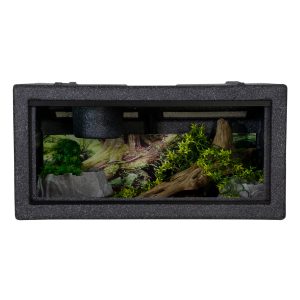 Model 332 Cage$599.00 – $699.00
Model 332 Cage$599.00 – $699.00 -
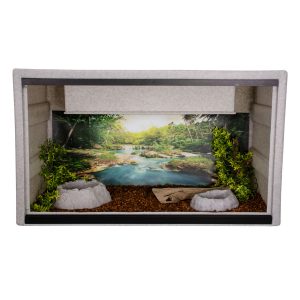 Model 433 Cage$889.00
Model 433 Cage$889.00 -
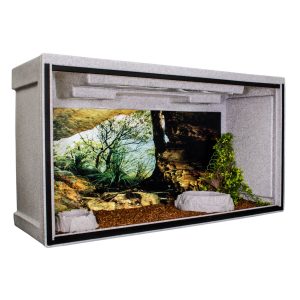 Model 734 Cage$2,249.00
Model 734 Cage$2,249.00
If these enclosures don’t suit your needs, not to worry. Visit our reptile enclosure product page for more options!
Design your Custom Chinese Water Dragon Enclosure
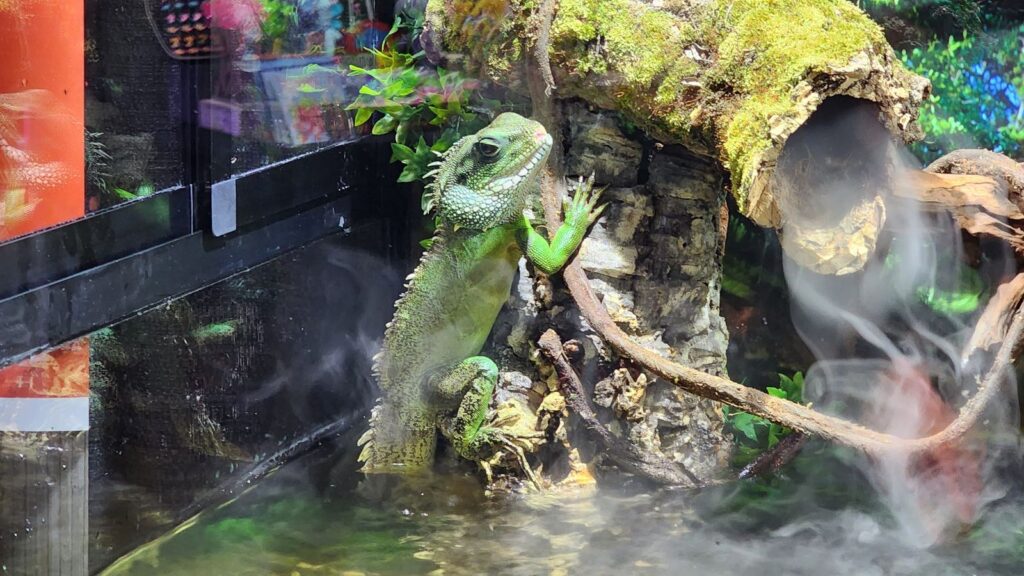
We have many standard enclosure sizes, but they’re all built to suit. And if you need a larger and more elaborate unit, you can view our sister company’s page, Custom Cages, for more options!
Do you plan on having multiple Chinese water dragon cages? Our enclosures are stackable, so they conserve space and are easily displayed in any setting. You can also add various decors to make it the perfect habitat.
Please let us know if you have any questions about cage designs and customizable options. Or, keep reading for more information about caring for Chinese Water Dragons!
Climate Requirements for Chinese Water Dragon Enclosures
Temperature
A Chinese Water Dragon’s habitat is hot and humid, so your cage climate should reflect that. Moreover, your enclosure should offer a temperature gradient consisting of a cool end, a warm end, and a basking spot.
- Cool End: 75° – 80°
- Warm End: 81° – 87°
- Basking Spot: 88° – 95°
Our cages come with ventilation and heating attachments to create the ideal temperature. You can regulate and monitor heat with a 1000-watt thermostat and probe.
It’s also recommended to maintain a nighttime temperature no lower than 75°. You can control this by turning off overhead heat sources and using an under-the-tank heater to keep temperatures stable.
Humidity
These dragons live in very wet climates, so high humidity is required. Creating a humidity level of around 80% is ideal for them, and we offer products that help you maintain and monitor that level.
Noticing the humidity drop below 80%? You can increase the level by spraying mist inside the cage twice daily (once in the morning and once in the evening). We offer some substrates and automatic misters to help you easily maintain the required humidity.
Substrate and Bedding
Even though they spend most of their time in trees, the substrate you choose is still important. It’s wise to have some type of bark or soil for Chinese Water Dragons. We offer a mold-resistant bark-based substrate designed for humidity-loving reptiles. A major benefit is that it holds and slowly releases moisture to maintain humidity.
-
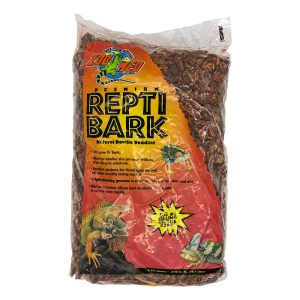 Reptile Bark$12.95
Reptile Bark$12.95
Monitor your substrate, as it may need to be cleaned somewhat frequently for a healthy environment. You should spot clean feces from the enclosure every day, but the substrate shouldn’t have to be replaced for a few months.
You can use items like paper towels or newspapers because they absorb moisture, are easy to replace, and they’re cheap. But, paper towels don’t do much for a cage aesthetic and you’ll have to replace them often, so it’s not the preferred method, but it is the most cost-effective.
Additional Accessories
Branches and Elevated Surfaces
Accessories will be necessary to recreate your dragon’s natural habitat. You’ll need to include some tree branches and elevated surfaces for your pet to climb on. A water dragon will not feel at home if it can’t climb.
Hides
For the ground level, it’s recommended that you include at least one form of a hide. Even though they prefer to rest on tree branches, a hide on the ground level is still useful.
-
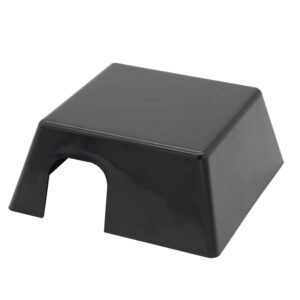 Reptile Hide$3.50
Reptile Hide$3.50 -
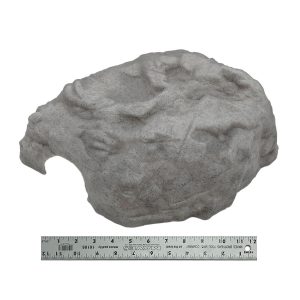 Large Reptile Cave Hide$49.95
Large Reptile Cave Hide$49.95
If your dragon feels stressed, it will look to find solace in a darker, cooler, hiding spot on the ground level. In nature, they like to lie in hollow logs or hollow tree trunks, so it’s a good idea to find a hide that emulates this.
Water Bowls
Including features with water is also important for your dragon’s well-being. We have a large selection of water bowls on our product pages. It’s recommended you clean out your water bowl every day to remove bacteria from your lizard stepping or laying in it.
-
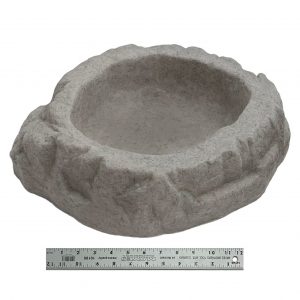 Assorted Extra Large Reptile Bowl$44.95
Assorted Extra Large Reptile Bowl$44.95 -
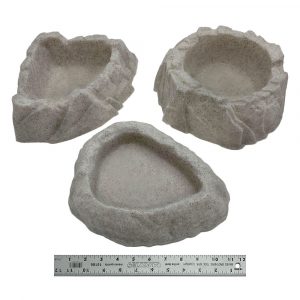 Assorted Large Reptile Bowl$29.95
Assorted Large Reptile Bowl$29.95
All our bowls are made of HDPE, just like our cages, so they’ll be easy to clean and last a lifetime.
More Information for Chinese Water Dragon Care
Now that you understand the requirements for a Chinese Water Dragon enclosure, here’s a little more information to help you provide the best care for your reptile(s).
Behavior and Temperament
These lizards are arboreal animals, meaning they enjoy climbing but can thrive on the ground as well. Couple that with their excellent swimming abilities, and they’re one of the most versatile lizards in the wild.
Chinese Water Dragons are one of the nicer reptiles, which makes them popular pets for hobbyists and enthusiasts. They tend to be shy initially, but once the owner establishes trust, the dragon will hide less and interact more. They are also relatively easy to care for, further supporting their case for being great pets.
Compatibility with Other Chinese Water Dragons
Chinese Water Dragons are communal reptiles, meaning they get along well with animals of their own species.
Now, this doesn’t mean you should put two or more dragons in a cage together.
They can become territorial in a confined space. So keep in mind that some Chinese Water Dragons will peacefully cohabitate, and some won’t, so it’s best to start with just one in an enclosure.
How to Properly Feed Your Chinese Water Dragon

Preferred Food
Chinese Water Dragons are omnivores, but their preferred food consists of insects and some small rodents or fish. They will most commonly eat crickets, locusts, grasshoppers, and a variety of worms. As they get older, dragons will add some fruits and veggies to their diet, depending on their environment.
They use their long, quick-firing tongue to grab nearby prey, then use their strong jaw to crush and devour it. Their strong bite allows them to consume hard-shelled insects like cockroaches, along with small rodents and fish.
Best Types of Food
The best food for your Chinese Water Dragon will be a smorgasbord board of insects, fruits, and veggies.
Some common healthy foods for these dragons are listed below:
- Insects (Every Meal)
- Crickets, locusts, grasshoppers, earthworms, silkworms, and mealworms
- Fruits and Veggies (Every few meals for adults)
- Collard greens, blueberries, raspberries, carrots, sweet potatoes, and green beans
- Treats (Once or twice a week)
- Small fish, baby mice, and juvenile mice
Insects and worms provide the most beneficial nutrients for water dragons, so they should make up the vast majority of their diet. Just make sure you’re swapping different insects for each meal.
Small rodents and fish are great treats because they provide the most protein, but they shouldn’t be included in every meal.
And finally, offer produce every few meals in small quantities to mix up their diet. This isn’t required for juvenile dragons, but it’s recommended to mix in produce for adults.
Frequency of feeding
The frequency of feeding depends on the age of your Chinese water dragon. You should feed a juvenile dragon as many insects as it can eat once per day. Then, remove any leftover food from the enclosure.
And as they become adults, you’ll only need to feed them once every two or three days. Again, offer them as much as they can eat in one sitting, then remove any leftovers.
